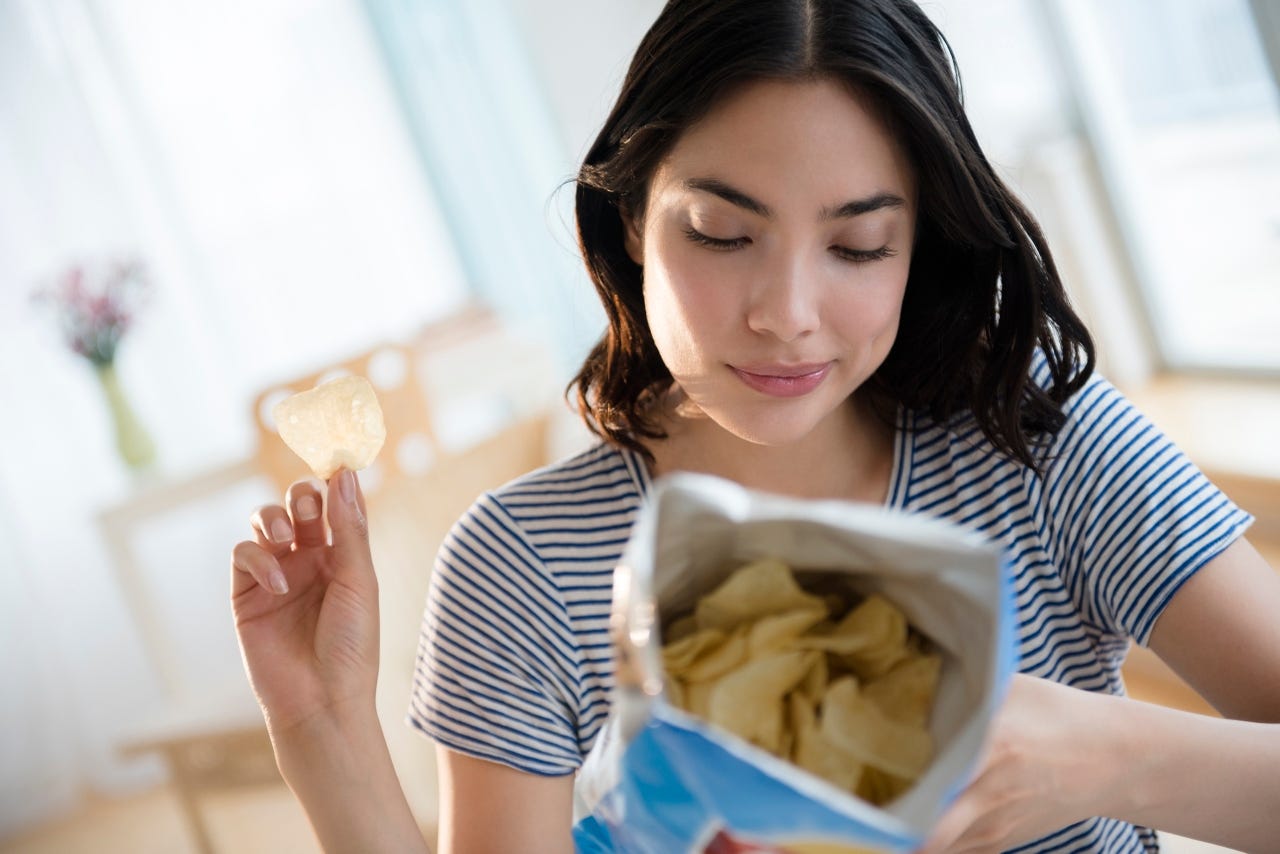Does snacking between meals provide nutritional value?
Snacking has become an integral part of the American diet, comprising nearly a quarter of daily calorie intake for U.S. adults

[Dec. 21, 2023: JD Shavit, The Brighter Side of News]
Snacking has become an integral part of the American diet, comprising nearly a quarter of daily calorie intake for U.S. adults. (CREDIT: Getty Images)
Snacking has become an integral part of the American diet, comprising nearly a quarter of daily calorie intake for U.S. adults, according to a recent study. In this research, which analyzed data from surveys involving over 20,000 participants, it was revealed that Americans consume approximately 400 to 500 calories in snacks each day, often surpassing the calorie count of their breakfasts. Unfortunately, these snacks tend to offer minimal nutritional value.
The study's senior author, Christopher Taylor, a professor of medical dietetics at The Ohio State University, expressed concern about the impact of snacking on overall dietary health. He stated, "Snacks are contributing a meal's worth of intake to what we eat without it actually being a meal. You know what dinner is going to be: a protein, a side dish or two. But if you eat a meal of what you eat for snacks, it becomes a completely different scenario of, generally, carbohydrates, sugars, not much protein, not much fruit, not a vegetable. So it's not a fully well-rounded meal."
The study, which appeared in PLOS Global Public Health, delved into the dietary habits of 23,708 U.S. adults aged 30 and above, spanning the years from 2005 to 2016. The participants provided 24-hour dietary recall data, offering insights into both the content and timing of their food consumption.
Researchers divided the respondents into four groups based on their HbA1c levels, a marker of glucose control. These groups included individuals without diabetes, those with prediabetes, individuals with controlled diabetes, and those with poorly controlled diabetes.
Related Stories
Overall, snacks accounted for a substantial portion of total daily calorie intake, ranging from 19.5% to 22.4%. However, the nutritional quality of these snacks was notably lacking.
Snacking choices predominantly comprised convenience foods high in carbohydrates and fats, followed by sweets, alcoholic beverages, sugar-sweetened non-alcoholic drinks, proteins, dairy products, fruits, grains, and, significantly trailing behind, vegetables.
Despite the limitations of capturing only 24 hours of food consumption, Taylor explained that this approach offered valuable insights into the eating habits of a large and diverse group of individuals. He noted, "it gives us a really good snapshot of a large number of people," helping identify nutritional gaps and areas where education could be beneficial.
Proportion of food sources of energy consumed during snacking occasions across levels of glycemic control. (CREDIT: PLOS)
One notable finding from the study was that individuals with diabetes exhibited healthier snacking habits compared to those without diabetes or with prediabetes. This suggests that diabetes education programs may be effective in promoting better dietary choices among individuals with the condition. However, Taylor emphasized that the lessons learned extend beyond just sugar and carbohydrate reduction.
"We need to go from just less added sugar to healthier snacking patterns," Taylor stressed. "We've gotten to a point of demonizing individual foods, but we have to look at the total picture. Removing added sugars won't automatically make the vitamin C, vitamin D, phosphorus, and iron better. And if we take out refined grains, we lose nutrients that come with fortification. When you take something out, you have to put something back in, and the substitution becomes just as important as the removal."
Checking blood sugar levels. Researchers divided the respondents into four groups based on their HbA1c levels, a marker of glucose control. (CREDIT: Creative Commons)
Taylor's advice centers on examining one's daily dietary picture as a whole, rather than focusing solely on snack choices. He suggests assessing whether snacks contribute to overall nutritional needs. This approach becomes particularly relevant during the holiday season when people often find themselves surrounded by tempting treats. Taylor advises thoughtful planning and taking stock of the home environment to make healthier snack choices easier.
"We think about what we're going to pack for lunch and cook for dinner. But we don't plan that way for our snacks. So then you're at the mercy of what's available in your environment," Taylor remarked.
The findings emphasize the importance of promoting healthier snacking patterns and considering the overall dietary context when making food choices. With a greater understanding of the impact of snacking on our health, individuals can make more informed decisions about what they consume between meals, ultimately working toward a more balanced and nutritious diet.
Note: Materials provided above by The Brighter Side of News. Content may be edited for style and length.
Like these kind of feel good stories? Get the Brighter Side of News' newsletter.



